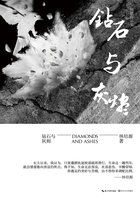The reason is that the composition of their bodies is liquid and hot compared to others, for more matter must be secreted in such a case.
Further, man has no such parts in his body as those to which the superfluous matter is diverted in the other animals; for he has no great quantity of hair in proportion to his body, nor outgrowths of bones, horns, and teeth.
There is evidence that the semen is in the catamenia, for, as said before, this secretion appears in the male at the same time of life as the catamenia in the female; this indicates that the parts destined to receive each of these secretions are differentiated at the same time in both sexes; and as the neighboring parts in both become swollen the hair of puberty springs forth in both alike.As the parts in question are on the point of differentiating they are distended by the spiritus; this is clearer in males in the testes, but appears also about the breasts; in females it is more marked in the breasts, for it is when they have risen two fingers' breadth that the catamenia generally begin.
Now, in all living things in which the male and female are not separated the semen (or seed) is a sort of embryo; by embryo Imean the first mixture of male and female; hence, from one semen comes one bodys- for example, one stalk of wheat from one grain, as one animal from one egg (for twin eggs are really two eggs).But in whatever kinds the sexes are distinguished, in these many animals may come from one emission of semen, showing that the semen differs in its nature in plants and animals.A proof of this is that animals which can bear more than one young one at a time do so in consequence of only one coition.Whereby, too, it is plain that the semen does not come from the whole of the body; for neither would the different parts of the semen already be separated as soon as discharged from the same part, nor could they be separated in the uterus if they had once entered it all together; but what does happen is just what one would expect, since what the male contributes to generation is the form and the efficient cause, while the female contributes the material.In fact, as in the coagulation of milk, the milk being the material, the fig-juice or rennet is that which contains the curdling principle, so acts the secretion of the male, being divided into parts in the female.Why it is sometimes divided into more or fewer parts, and sometimes not divided at all, will be the subject of another discussion.But because it does not differ in kind at any rate this does not matter, but what does matter is only that each part should correspond to the material, being neither too little to concoct it and fix it into form, nor too much so as to dry it up; it then generates a number of offspring.But from this first formative semen, if it remains one, and is not divided, only one young one comes into being.
That, then, the female does not contribute semen to generation, but does contribute something, and that this is the matter of the catamenia, or that which is analogous to it in bloodless animals, is clear from what has been said, and also from a general and abstract survey of the question.For there must needs be that which generates and that from which it generates; even if these be one, still they must be distinct in form and their essence must be different; and in those animals that have these powers separate in two sexes the body and nature of the active and the passive sex must also differ.If, then, the male stands for the effective and active, and the female, considered as female, for the passive, it follows that what the female would contribute to the semen of the male would not be semen but material for the semen to work upon.This is just what we find to be the case, for the catamenia have in their nature an affinity to the primitive matter.














